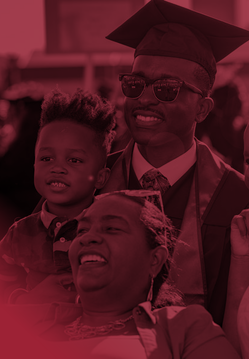Explore our resources for psychology, counseling, and social work degrees and learn about career options that fit your future.

Mental health disorders in the United States seem to be more prominent now than ever. According to the National Institute of Mental Health (NIMH), nearly 20 percent of adults in the U.S. live with some sort of mental illness. Depression is a prime example.
Suicide is also on the rise, accounting for over 49,000 deaths in 2022. Mental health issues, which have not been prioritized as prominently as many professionals in the field feel they should be, can also lead to physical illness. Yet, Americans don’t receive regular mental health checkups.
“There is still a stigma surrounding mental illness since it is something that is difficult to measure, and this keeps people from seeking and receiving help when they need it most,” explains Dr. Margaret Moodian, assistant professor of humanities and social sciences at UMass Global.
If you feel drawn to the idea of dedicating your career to helping people afflicted by mental health disorders, you’ve come to the right place. Read on as we outline the ins and outs of working as a mental health therapist, sometimes referred to as a mental health counselor.
What Is a Mental Health Therapist?
As a mental health therapist, you could play a key role in helping people cope with mental and emotional ailments. You would use a range of psychotherapy techniques to help alleviate psychological distress.
Some common things that mental health therapists help support clients through include:
- Depression
- Anxiety
- Addiction and substance abuse
- Phobias
- Stress
- Emotional difficulties
- Self-esteem issues and eating disorders
- Grief
- Marital distress
Some mental health disorders can be overcome, while others need to be managed. Mental health therapists and counselors can help clients of all kinds develop strategies to either defeat their illnesses or minimize the effects of their disorders. The variety of clients you could work with means no two days on the job will be the same.
“It’s why I love therapy,” confesses Mike Tassin, a licensed mental health counselor who earned his master’s degree from UMass Global. “Every case is so individualized. I may talk about some of the same issues, but everyone brings such different experiences to our work.”
What Does a Mental Health Therapist Do?
The primary duty of mental health therapists is to provide a safe, non-judgmental space for clients to explore a range of issues that may be troubling them. “Good therapy is a dynamic, unique, and creative process with one sole aim: to provide help and support to the client,” explains mental health therapist Dr. Brittany Aleshire.
“Whether the focus is on addictions and substance abuse; family, parenting, and marital problems; stress management; or self-esteem at its core, therapy is about fostering a meaningful, supportive, helping relationship,”
Mental Health Therapist Tactics
Mental health therapists work to achieve these goals by collecting information about their clients through interviews, observation, or tests. This can include conducting individual or group therapy sessions, diagnosing and treating mental and emotional disorders, crafting service plans and coordinating treatment with other health care professionals, and performing crisis interventions as needed.
Many professionals use cognitive behavioral therapy in sessions with their clients. This is a common type of psychotherapy that helps clients come to terms with their inaccurate or negative ways of thinking and then re-frame those thought structures in a positive way. This practice can help many clients to replace their damaging behaviors with productive ones.
“There is an art to therapy in that we seek to blend relational work with empirically validated interventions and approaches to help clients improve,” Dr. Aleshire says. “While techniques and interventions can be effective, the overall best predictor of ‘success’ in therapy is a trusting, respectful client-therapist relationship.”
With that in mind, there are several soft skills employers look for in top-notch mental health counselors. These include active listening, critical thinking, advanced communication, service orientation, and interpersonal skills. “Therapists provide their clients with empathy, acceptance, support, and the encouragement to know that they are not alone in their experience,” Dr. Aleshire explains.
Where Do Mental Health Therapists Work?
Therapy for mental health is needed in a surprisingly large pool of environments. Some professionals in this sector work with specific populations — such as the elderly, children, or college students — while others serve a more encompassing role.
Consider the following examples of mental health counselor work environments as you evaluate whether this career path is a good fit for you:
- Mental health clinics
- Private practices
- Hospitals
- Elementary and secondary schools
- Colleges and universities
- Community health centers
- Government agencies
- Correctional and juvenile detention facilities
- Probation or parole agencies
- Social service agencies
- Halfway houses
- Substance abuse and addiction recovery services
- Employee Assistance Programs (EAPs)
Understanding Behavioral Health vs. Mental Health
When discussing mental health, it's important to understand the broader context of behavioral health. While the two terms are often used interchangeably, they have distinct meanings that encompass different aspects of well-being.
Defining Behavioral Health
Behavioral health refers to the connection between our behaviors and the health and well-being of the body, mind, and spirit. It encompasses a range of activities that people engage in to maintain good health or to recover from illness. These activities include not only actions like exercise, diet, and sleep but also habits like smoking, alcohol consumption, and drug use. Behavioral health addresses how these behaviors impact both physical and mental health.
Key aspects of behavioral health include:
- Substance Use and Abuse: This includes the use of alcohol, drugs, and other substances that can impact health. Behavioral health specialists often work with individuals to address and manage substance use disorders.
- Healthy Lifestyle Choices: Engaging in regular physical activity, maintaining a balanced diet, and ensuring adequate sleep are critical components of behavioral health.
- Behavioral Interventions: Therapies and interventions aimed at changing unhealthy behaviors, which help people develop healthier habits and coping mechanisms.
- Preventive Measures: Programs designed to prevent the onset of unhealthy behaviors, like educational campaigns about the dangers of smoking or excessive alcohol consumption.
Distinguishing Between Mental and Behavioral Health
Mental health focuses specifically on an individual's psychological state. It encompasses emotional, psychological, and social well-being, influencing how individuals think, feel, and act.
Behavioral health, on the other hand, includes mental health but extends to behaviors that contribute to overall health. For instance, a behavioral health specialist might help someone with a mental health condition while also addressing behaviors like exercise, diet, and substance use that impact their physical health. This holistic approach recognizes that mental well-being and physical health are interconnected and that improving behavioral patterns can enhance overall health outcomes.
Integrating Behavioral and Mental Health
Every patient’s treatment must be uniquely tailored, and there are numerous factors that go into deciding what kind of plan is best. The most effective treatment often involves providers working together to examine all aspects of the patient’s well-being. Only then should they recommend interventions, which can include medication, group therapy, psychotherapy, and other forms of treatment. What health experts call comorbidity — the presence of two or more conditions at the same time — is perhaps the most important thing to consider when talking about mental and behavioral health treatment.
If someone is experiencing both depression and substance abuse, for example, it won’t do much good if their counselor only treats their depression. The same issue arises when a provider only attempts to modify the addictive behavior. It takes a two-pronged approach.
How to Begin a Mental Health Therapist Career Path
If you hope to become a mental health therapist, you’ll need to earn a master’s degree in a mental health-related field. Two of the most common fields of study are psychology and clinical social work. You typically need a bachelor’s degree in any field from an accredited institution to be eligible for such graduate programs.
As you search for the right master’s program to pursue mental health therapy, it’s important to look for one that has received proper accreditation. If you’re seeking a master’s in social work (MSW), be on the lookout for a program that’s accredited by the Council on Social Work Education.
Mental health therapists are also required to become licensed in the state in which they intend to practice. Most states require candidates to pass a licensure exam in addition to a state ethics exam. Also, note that licensure can require anywhere from 2,000 to 4,000 hours of post-degree supervised clinical experience as well as continuing education courses.
If you’re seriously considering a role as a mental health therapist, you should also know that jobs for professionals have an incredibly bright outlook. The U.S. Bureau of Labor Statistics reports these roles are projected to grow 22 percent by 2031, which is more than four times faster than the average for all occupations.
Pursue a Mental Health Therapy Career at UMass Global
As you inch closer to a meaningful career as a mental health therapist, know that you’re not alone. National acknowledgment of our mental health crisis is also growing.
“There are many exciting things happening to create awareness about mental health,” Moodian says. “We need to continue the conversation in order to make a difference nationally in mental health reform.”
If you’re committed to doing your part by dedicating your career to this all-important mission, it could be time to begin researching master’s programs that can help get you there. Explore the master's programs that UMass Global has to offer.








